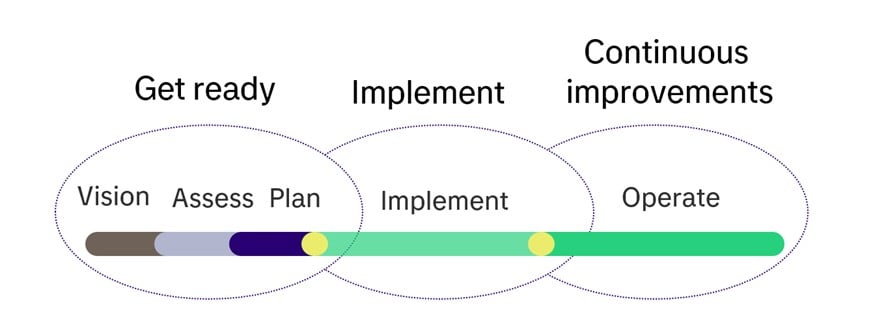
Are you facing ERP cloudification? Don’t miss the opportunity to take a significant step in your digital transformation
ERP cloudification is a crucial step in any larger digital transformation agenda. However, Cloud ERP is often treated as a system upgrade. Don't miss out on an important opportunity: Keep reading.
ERP (Enterprise Resource Planning) cloudification is a much broader transformation than just migrating your systems to the cloud. The key to success is aligning Enterprise Architecture (EA) and IT strategy with business targets and strategy, turning IT spending into a valuable investment.
In this blog, we will explore the potential drawbacks of seeing your cloud journey as a version upgrade of your existing ERP, and we will shed light on the crucial aspects of a strategic ERP transformation.
So, how do you get the most out of your cloud ERP? First of all, it is essential that you understand the purpose and connection to your overall business strategy. This might sound self-evident, yet surprisingly many companies in the Nordics still approach their ERP cloudification as a “lift-and-shift” of their ERP system. An upgrade approach, also known as the brownfield approach, can be a good starting point, but you should always think one step further. How will it support your future digitalization journey? How well does the current business model support the long-term strategy?
ERP cloudification does not equal business processes modernization. An ERP system upgrade is an important first step in your transformation journey and brownfield is not always the best option.
,
Why should you go beyond an ERP system upgrade approach?
A system upgrade approach will not deliver you the clean and standard core system that you need to improve cost efficiency. Instead, it means that you must be prepared for numerous costly modernization projects and expensive maintenance of the complex system environment. If this does not sound appealing, consider taking a different approach.
Your ERP cloudification brings you great momentum to modernize and optimize your business processes. If you choose to handle the project as an ERP system upgrade, you easily end up transferring your existing complexity and technical debt to the cloud. This is a detour in your digital transformation journey, which comes with a substantial risk of not keeping project time and budget constraints.
Becoming more data-driven is an objective for many, and this is one more reason you should evaluate your processes. Data is as good as your processes. The cloud world will add on demands for how to manage your data while keeping all privacy and security concerns in mind. Managing bad-quality data in the cloud is risky and expensive.
The new system creates momentum to change ways of working. If everything keeps on functioning as it always has, it is human nature to get used to it and resist any changes. We encourage you to use the momentum of the new system to also modernize your processes.
A robust cloud transformation assessment can make a significant difference
The key is to understand the drivers of your digital transformation and how it relates to your overall business strategy. We have conducted numerous cloudification assessments for large Nordic companies to scope their transformation journeys, alongside future-proofing their ERP systems.

Three main pillars of ERP cloud transformation
Each company always has a unique starting point, and the recommended approach is different for everyone. While there is no “One-size-fits-all” transformation, there are plenty of best practices and tools to realize rapid impact with transformation. The key logic is that a standardized and clean core ERP will result in cost savings, which you can allocate towards the development of data models and enterprise architecture that aligns with business strategies.
Benefits of a value-driven transformation approach:
Improved efficiency: Streamlined processes lead to enhanced efficiency and reduced costs, achieved through automation, intelligent AI-driven automation, replacing manual processes with automated ones, and consolidating systems and applications.
Enhanced customer and end-user experience: Companies can create better and more personalized experiences by leveraging data-driven insights and technologies such as artificial intelligence and machine learning.
Increased flexibility: Scalability allows businesses to quickly adapt to changing market conditions and customer demands.
Innovation: Ability to explore modern technologies and solutions, create new products and services, and improve existing ones.
Data as an asset: When you have a clear understanding of the architecture and ownership of data, you can start utilizing your data as an asset to build new business models or enhance existing ones.
Security: Enhanced security measures such as stronger authentication and data protection are crucial, as is achieving improved resilience against cyberattacks and other digital threats.
Contact us

Robert helps guide customers through their SAP journeys with a passion for process improvement and digitalization. With over 20 years of industry experience in large enterprises and roles spanning from key user to global program manager, Robert knows the challenges companies can have from all levels. Robert is utilizing his solution experience to help customers to optimize, automate and digitalize their business processes.



